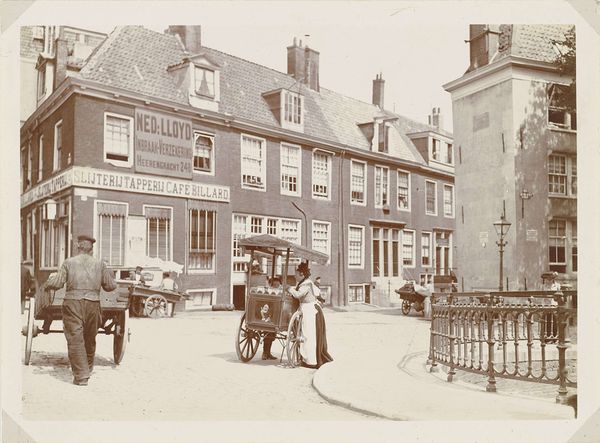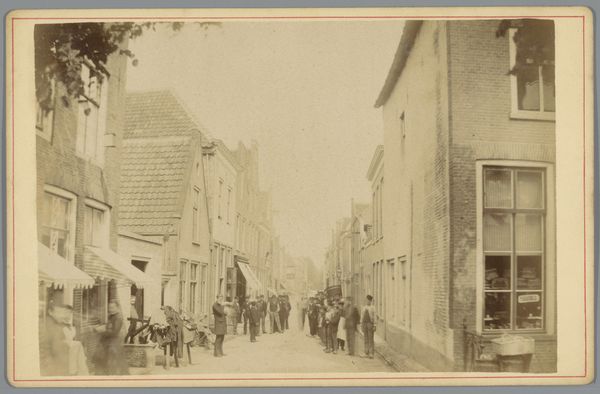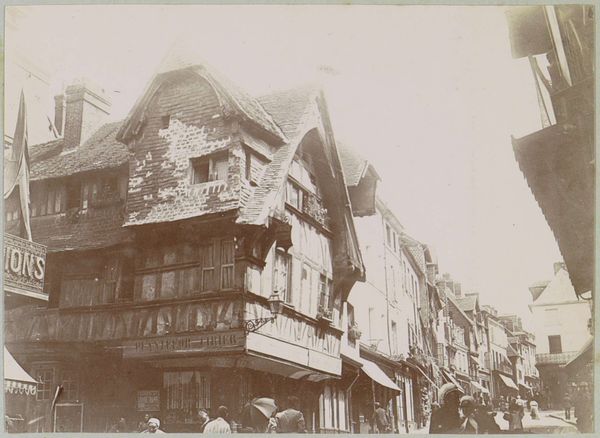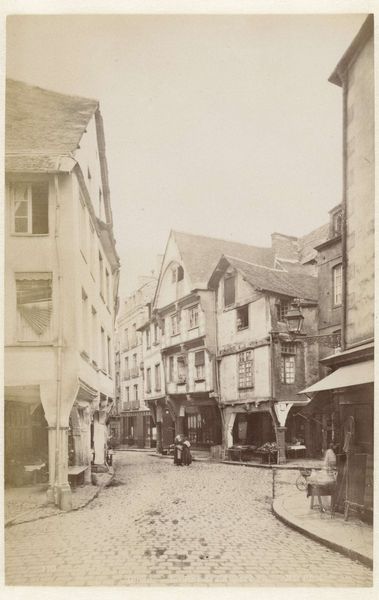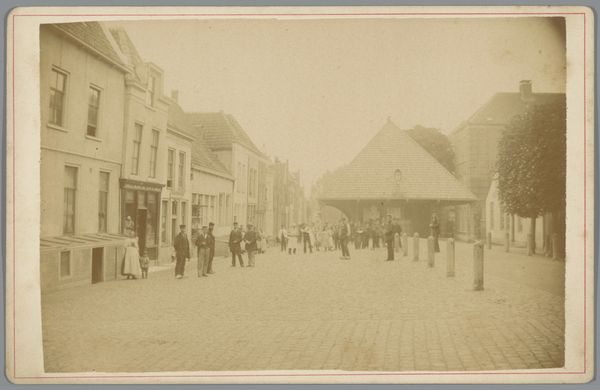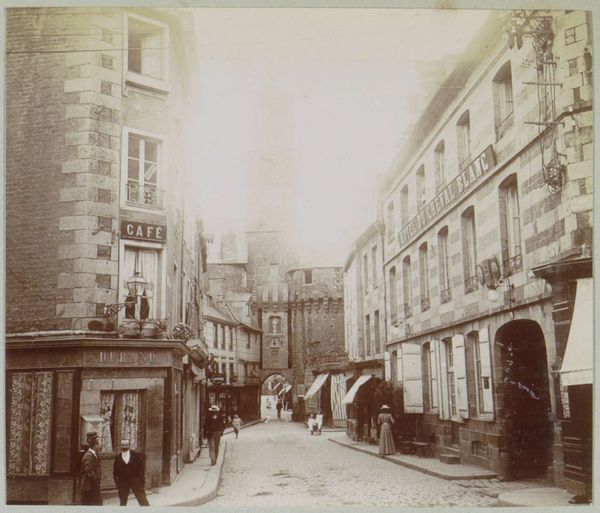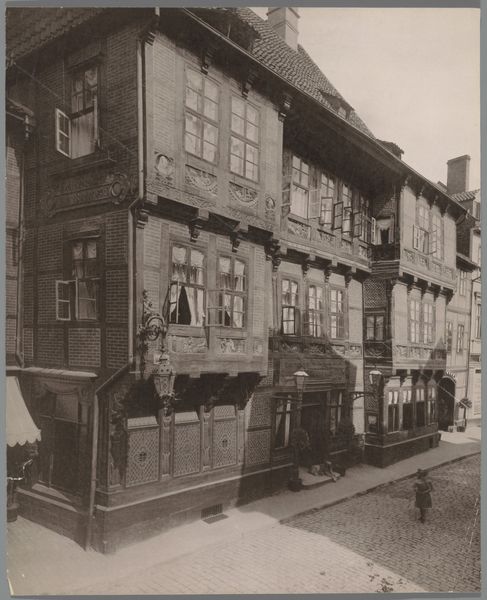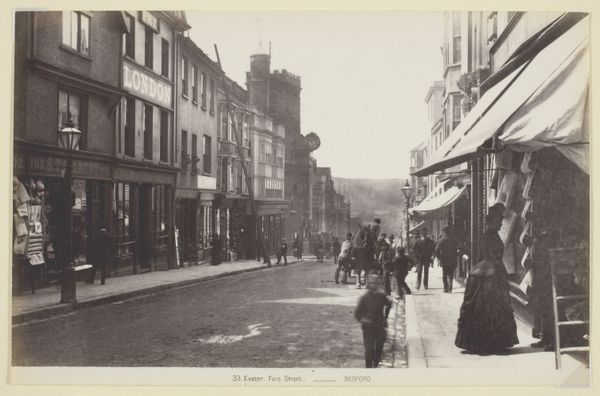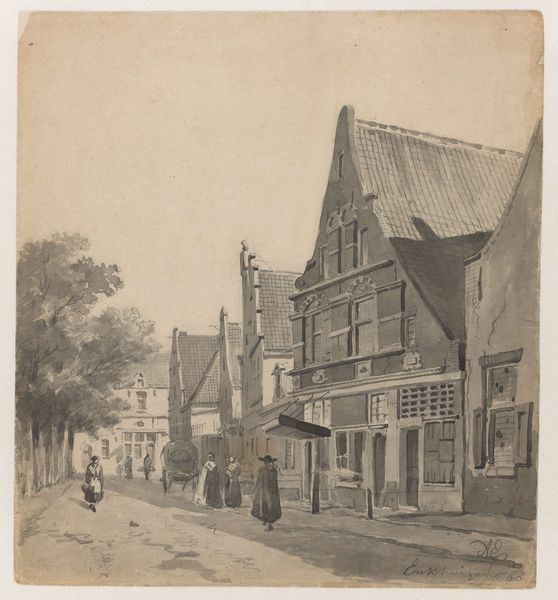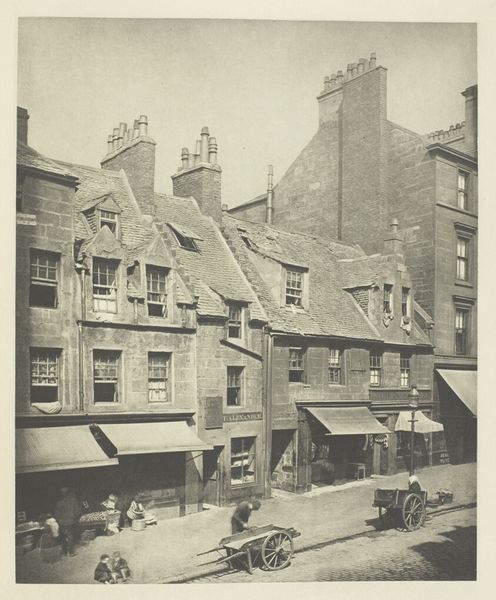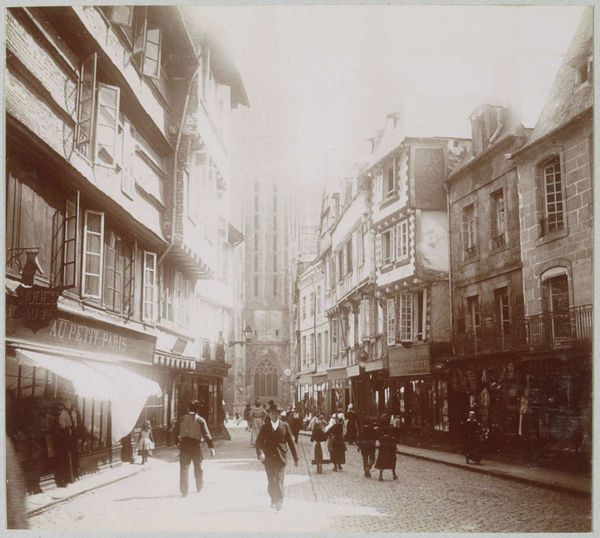
#
scenic
#
architectural sketch
#
light pencil work
#
outdoor branding for sign
#
photo restoration
#
pencil sketch
#
outdoor photograph
#
charcoal drawing
#
scenic spot
#
watercolor
Dimensions: height 70 mm, width 82 mm
Copyright: Rijks Museum: Open Domain
Editor: So, this is "Straat in Lannion," created in 1901. The material isn't listed, but it appears to be a faded photograph. I'm immediately struck by the quiet stillness of the street. It feels almost like a stage set. What do you see in this piece? Curator: The stillness you mention is crucial. It prompts us to consider the cultural and social functions of imagery. Why capture a street this way? In 1901, photography was gaining popularity as a means of documenting urban spaces, both glorifying progress and often ignoring or subtly erasing less desirable realities. Notice the seeming absence of industry and the emphasis on quaint architectural details. Editor: I see what you mean. It does seem deliberately composed to highlight a particular kind of historical charm. The almost complete absence of people emphasizes the architecture. Does this connect to how art was publicly displayed or consumed at the time? Curator: Absolutely. Public exhibitions often shaped perceptions of modernity and national identity. Images like this reinforced a vision of France as rooted in its regional past even as it moved into the 20th century. Think of how tourism was also developing. Images like these catered to and furthered specific visions and agendas, prompting a particular engagement with the sites depicted. Who benefitted from this selective framing? What narratives are being upheld and what agendas do those narratives push? Editor: That’s a good point. It reframes the photo; it’s less about simply documenting a street, and more about constructing a particular image for public consumption. Curator: Precisely. Considering art’s public role allows us to critically examine the social forces that shape both the creation and the interpretation of such imagery. Editor: This makes me think differently about seemingly straightforward historical images. There's so much more beneath the surface. Curator: And that's where history can play its most significant role in examining and reflecting on artistic representation!
Comments
No comments
Be the first to comment and join the conversation on the ultimate creative platform.
